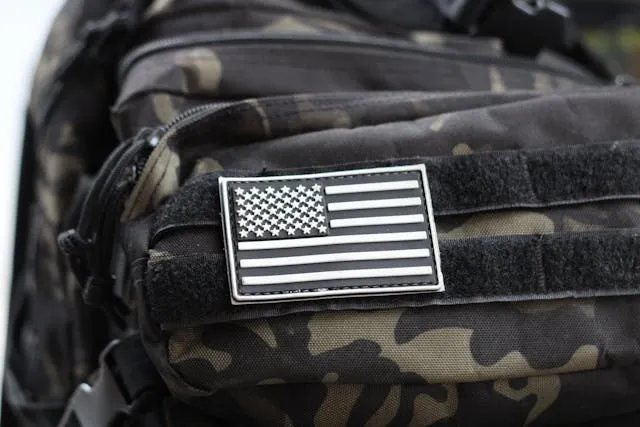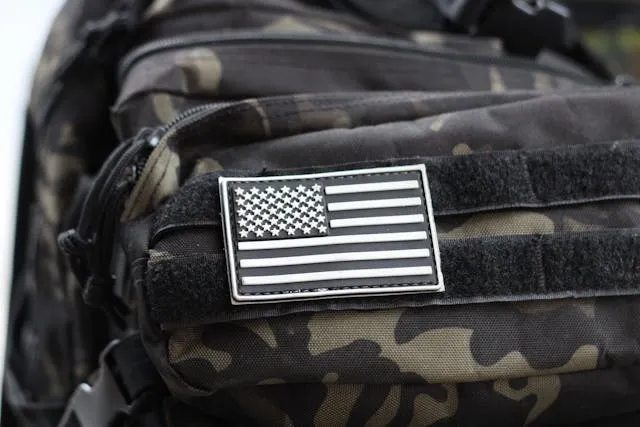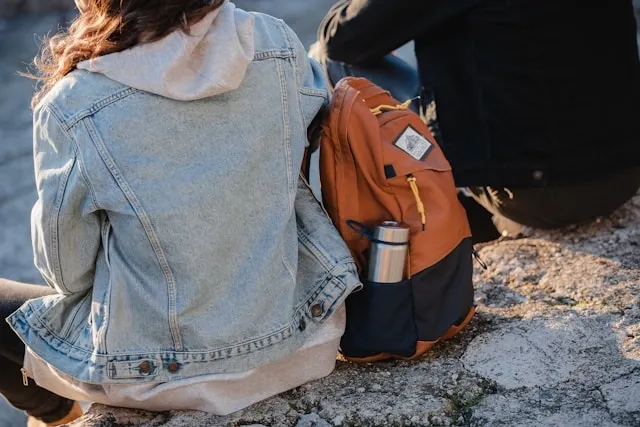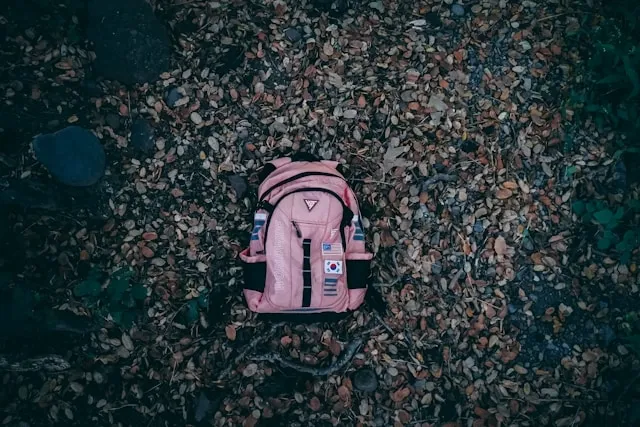How To Put A Patch On A Backpack? (Step-By-Step Methods, Materials And Patch Type)
Backpacks go way beyond mere functionality - they are a style choice and a canvas for personal expression. Whether you are showing off your personality, commemorating a trip, or fixing a tear, adding patches can transform a bag’s look and durability.
In this guide, we explore how to put a patch on a backpack, exploring different styles and techniques depending on patch type and material. Read on to master how to attach patches to a backpack securely and stylishly.

Key Takeaways
- Learn how to put patches on a backpack using iron-on, sewing, Velcro, or adhesive methods - choose the right one for your backpack’s material.
- Iron-on is best for cotton or canvas, while synthetic or delicate fabrics benefit from sew-on applications.
- Layout and patch type are important considerations, and you should always clean the surface before applying a patch on a backpack.
- We supply high-quality custom backpacks with personalized designs and plenty of space to add patches to express your personality.
Table of contents
-
How To Put A Patch On A Backpack?
-
Best Ways To Attach A Patch To A Bag?
-
What Kind Of Patches Can I Put On My Backpack?
-
How To Iron On Patches On Backpack
-
How To Sew A Patch On A Backpack
-
How To Put A Velcro Patch On Backpack
-
How Do You Get Patches To Stay On A Backpack?
-
What Kind Of Backpacks Work Best With Patches?
-
Tools And Materials You Need To Put A Patch On A Backpack
-
How Do You Cover A Hole In A Backpack With A Patch?
How To Put A Patch On A Backpack?
There are several ways to learn how to put a patch on a backpack, with common choices including iron-on, sewing, adhesive, or Velcro methods. Choosing the best one depends on the patch’s purpose - is it decorative or a repair - as well as your backpack’s material.
If you are learning how to put patches on backpack surfaces like cotton or canvas, iron-on is simple, and there are benefits of using eco-friendly promotional product materials like these. With delicate or synthetic materials, it might be better to go with sewing. Adhesive options are easy but less durable.
Before you apply any patch onto a backpack, clean the area thoroughly and plan your placement to ensure centering and alignment. This is important both for appearance and adhesion.
Knowing how to attach a patch to a backpack gives you creative control and helps prolong the life of your favorite gear.

Best Ways To Attach A Patch To A Bag?
There are several answers to the question of how to put patches on a backpack, and the three main techniques are as follows: iron-on, sewing, or adhesive. Let’s look at these in a little detail:
- Iron-on: These patches work well on cotton and canvas, but may be risky on nylon.
- Sewing: Learning how to sew a patch on a backpack by hand offers long-term durability and works on most fabrics.
- Adhesive: This solution is convenient but may need reinforcement over time.
Each method depends on your bag’s fabric and the weight of the patch. For nylon backpacks, it is possible to use iron-on patches but the heat may be a problem for the synthetic fabric. Consider a compatibility chart if you create your own custom leisure backpacks and want to add embellishments.
Looking for a casual backpack for carrying a laptop securely?
Work with us to create custom lightweight casual laptop backpacks with personalized designs that are durable and practical whilst showcasing branding or other looks.
What Kind Of Patches Can I Put On My Backpack?
You can choose from a range of types of patches on backpacks, ranging from decorative to functional. Let’s look at what these might mean:
- Decorative patches: These include travel souvenirs, pop culture symbols, sports logos, or hobbies reflecting your identity.
- Functional patches: These are often used to repair holes or reinforce worn areas.
For ideas to personalize backpacks that maximize aesthetic appeal, explore embroidered, printed, or woven patches. When learning how to apply patches to backpacks, texture and size are crucial to avoid awkward placement.
Some people prefer custom designs or name tags, while others like to show affiliations or causes. Whatever your choice, remember that any patch on a backpack can make a statement. Just make sure the patch type aligns with the application method for long-lasting results.
How To Customize Your Backpack?
Customizing your backpack begins with choosing a theme. This could be music, adventure, anime, or branded designs. From there, choose patches that complement that vision. You will need to plan the placement, starting with larger centerpieces before filling the space with smaller accents.
We recommend that you mark the positions first to add patches to backpack fabric - chalk and masking tape work well for this. Keep balance and spacing in mind for visual appeal. Patches on backpacks personalize your look and also let you share interests at a glance.
Whether for showing off achievements or artistic flair, or simply for branding, patch customization is fun. But you can also personalize by ordering custom leisure travel backpacks from our service. You create the design and we use cutting-edge printing techniques to apply it to your backpack, with various other custom choices available.

How To Iron On Patches On Backpack
To learn how to iron on patches on a backpack, you will need to gather an iron, parchment paper, and a heat-resistant surface in addition to your bag and an iron-on custom embroidered patch.
Here’s the method:
- Place the patch where you want it, ensuring it’s flat and centered.
- Cover it with parchment paper to protect the patch and the fabric.
- Set your iron to medium-high, no steam, then press firmly for 15-30 seconds.
- Allow to cool, then test the edges. Repeat if necessary.
Ideal fabrics for iron-on applications include cotton and canvas. If you’re wondering about using iron-on patches with nylon, proceed with caution by using a lower heat setting and protective layers.
Create the ultimate branded or personalized backpack for casual use
Our custom leisure backpacks allow you to add branded or personal designs to high-quality, casual backpacks for the perfect blend of style and functionality.
Learn moreHow To Sew A Patch On A Backpack
If you’re learning how to sew a patch on a backpack, the first step is to pin the patch in place. From here, the process is as follows:
- Use a strong thread and needle suited to tough fabric.
- Hand-sew, or use a machine if possible, around the edges of the patch.
- Common stitches include straight stitch, backstitch, or whip stitch.
- For durability, reinforce with double threading or knotting.
Hand sewing works well for curved or thick areas, but a machine may help with speed and consistency. Learning how to sew patches on a backpack is ideal for permanent placement and a good solution for nylon or textured fabrics. The backpack market is growing steadily, so embellishing with patches and other customization methods is a great way to stand out.
How To Put A Velcro Patch On Backpack
If you prefer more flexibility, learn how to put a Velcro patch on a backpack. Velcro patches can be sewn directly onto the fabric or attached with a Velcro adhesive backing.
Tactical backpacks sometimes feature built-in loop fields for easy patch swapping. To apply, you need to clean the area before peeling and pressing the adhesive side (if using a stick-on version). For extra durability, sew the Velcro panel onto your backpack and the patch backing to your chosen patch.
This method is ideal if you want interchangeable patches, which are common with custom PVC patches. Unlike traditional techniques, Velcro patches on backpacks offer flexibility alongside convenience and style. This is a common choice in the following areas:
- Military
- Law enforcement
- Scouting
- Travel
What Do I Do If My Patch Won’t Stick?
If your patch on a backpack won’t stay in place, your first action should be to inspect the surface. Oils, dirt, or coatings can prevent adhesion. Clean the area with mild soap and water before drying thoroughly.
- Iron-on patches: Heat might be insufficient. Try reapplying with more pressure and a longer time, remembering to use parchment paper for protection.
- Adhesives: Try a fabric-specific glue for the patch application.
If you are learning how to iron a patch on a backpack, make sure the iron reaches the proper temperature, particularly if you are working with cotton. For synthetic fabrics, a low setting is needed for protection. To attach patches to a backpack long-term, sometimes sewing is the most reliable option.
A stubborn patch might just need the right prep and approach.
Create custom backpacks with added USB charging features for maximum utility
These custom USB charging backpacks are the ultimate combination of style and practicality, and you can add personalized designs and embellish with patches.
How Do You Get Patches To Stay On A Backpack?
To ensure patches stay on backpacks, proper prep and pressure are essential. Before you apply, clean and dry the surface fully. Iron-ons should be pressed firmly with an iron set to the right temperature, remembering to use parchment paper for protection Repeat as needed.
When learning how to iron on patches on backpacks, make sure you let them cool fully to seal the bond. For adhesives, press down hard and allow them to dry flat for 24 hours. You will always get the strongest hold from sewing, which can be the best solution to add patches to use custom promotional items effectively.
If a patch begins to peel, reapply it with heat or sewing and make sure to reinforce the edges. Whatever method you choose, follow the prep steps and use high-quality tools at every stage.
What Kind Of Backpacks Work Best With Patches?
When exploring how to put a patch on a backpack, the material is important. Cotton, denim, and canvas backpacks are ideal as they will accept iron-ons, sewing, and adhesives well.
- Polyester: This can work, particularly if you’re choosing the hand-sewing option.
- Treated/slick nylon: This is more challenging, particularly for iron-on patches, as it is a sensitive material.
Brands like JanSport and Fjällräven make patch-friendly bags, while many tactical backpacks feature Velcro areas that are ideal for how to put a Velcro patch on a backpack. Avoid backpacks with waterproof coatings or wax finishes unless sewing, and remember to organize your backpack to keep it looking its best.
Enjoy the right balance of style and substance from a backpack when travelling
Work with us to create custom leisure travel backpacks with personalized or branded designs that offer style and functionality, with plenty of spaces to add patches.
Get startedTools And Materials You Need To Put A Patch On A Backpack
To know how to add patches to backpack surfaces, the right tools are essential. These are different depending on your chosen application method, so consider the following:
- Sewing: You’ll need a strong needle, heavy-duty thread, a thimble, and some scissors.
- Iron-on: You will need an iron, parchment paper, and a heat-safe surface like an ironing board.
- Adhesive: You will need fabric glue or stick-on patches.
- Velcro: You will need Velcro strips that may be peel-and-stick, or they might need adhesive or some stitching.
If you’re learning how to attach a patch to a backpack reliably, backing fabric or interfacing may help for reinforcement. Studies have shown that traditional backpacks with short shoulder straps are ideal for military, hiking, and mountaineering, and you can personalize yours with some high-quality patches and the right tools.

How Do You Cover A Hole In A Backpack With A Patch?
Covering a hole with a patch on a backpack is both functional and stylish. First, trim fraying edges around the tear, then cut a patch that is large enough to extend at least half an inch on all sides of the damage.
For a strong repair, it is ideal to sew a patch on a backpack hole with interfacing under fabric, secured with a backstitch. With iron-on patches, position it with parchment paper on top and press firmly with a hot iron.
If you have a custom lightweight laptop backpack and it develops a hole, you might think that’s the end of the backpakc’s usability. But patches offer the opportunity for a durable, high-quality repair - just make sure you apply them with a robust attachment method.
Frequently Asked Questions About How To Put A Patch On A Backpack
How To Put A Patch On A Backpack Without Any Hassle?
Use iron-on backpack patches if you have a bag made from cotton or canvas. Clean the surface, place the patch, cover with parchment paper, and apply pressure with a hot iron for 15-30 seconds before allowing to cool.
Can You Sew A Patch On A Backpack By Hand?
Yes, you can! Many people learn how to sew patches on a backpack by hand using strong thread and a basic stitch like a backstitch. Make sure you knot securely to prevent unraveling.